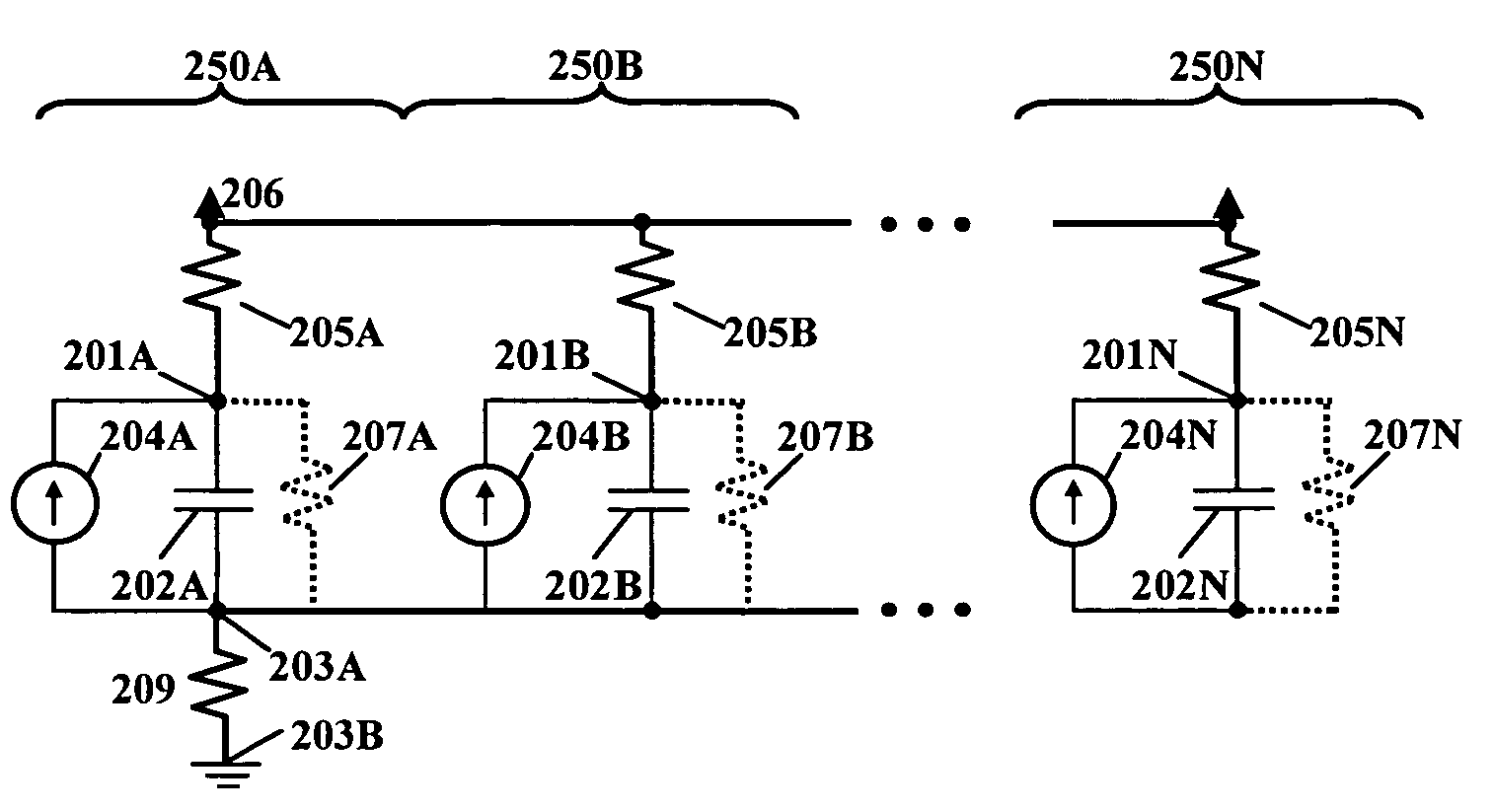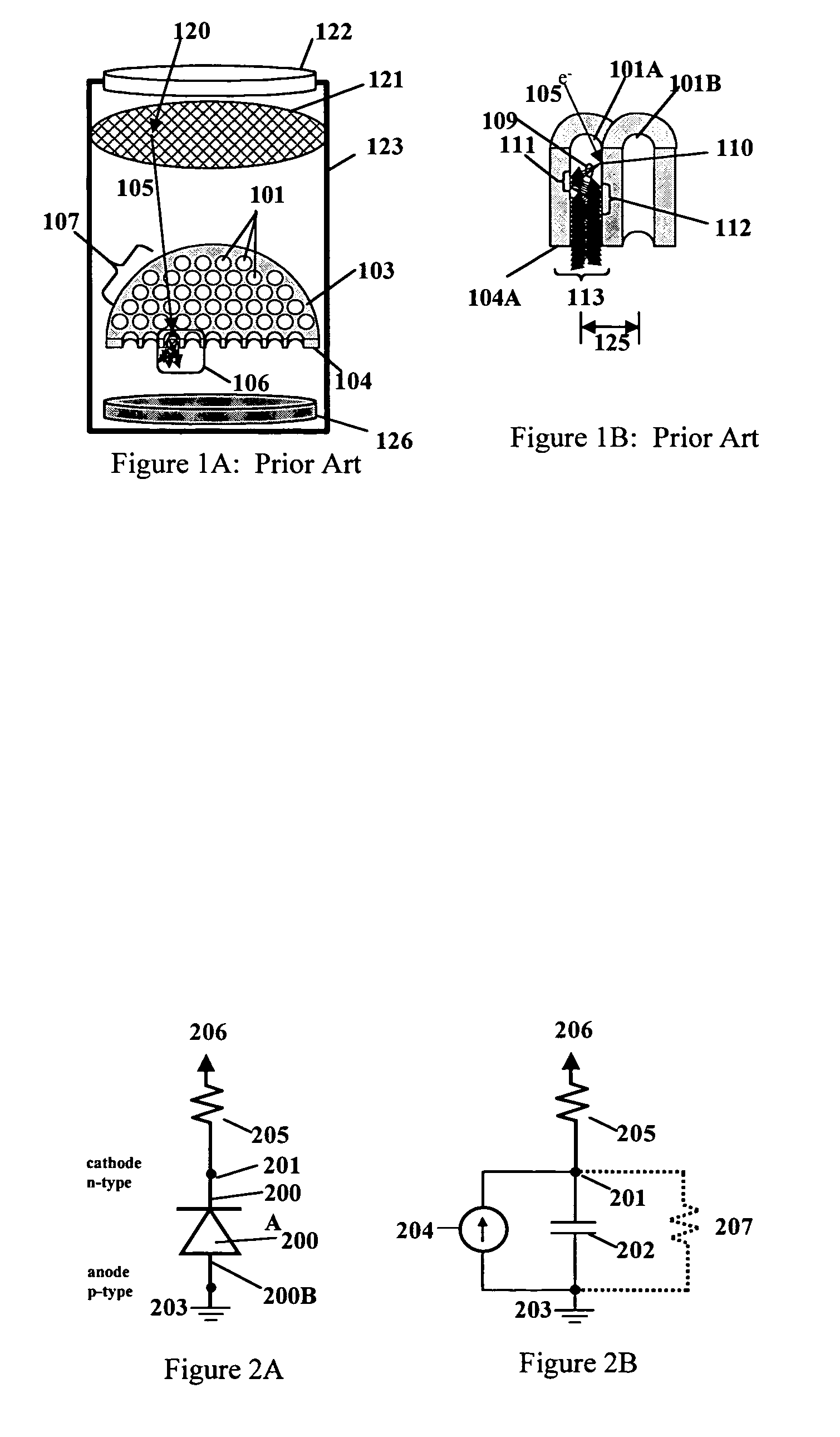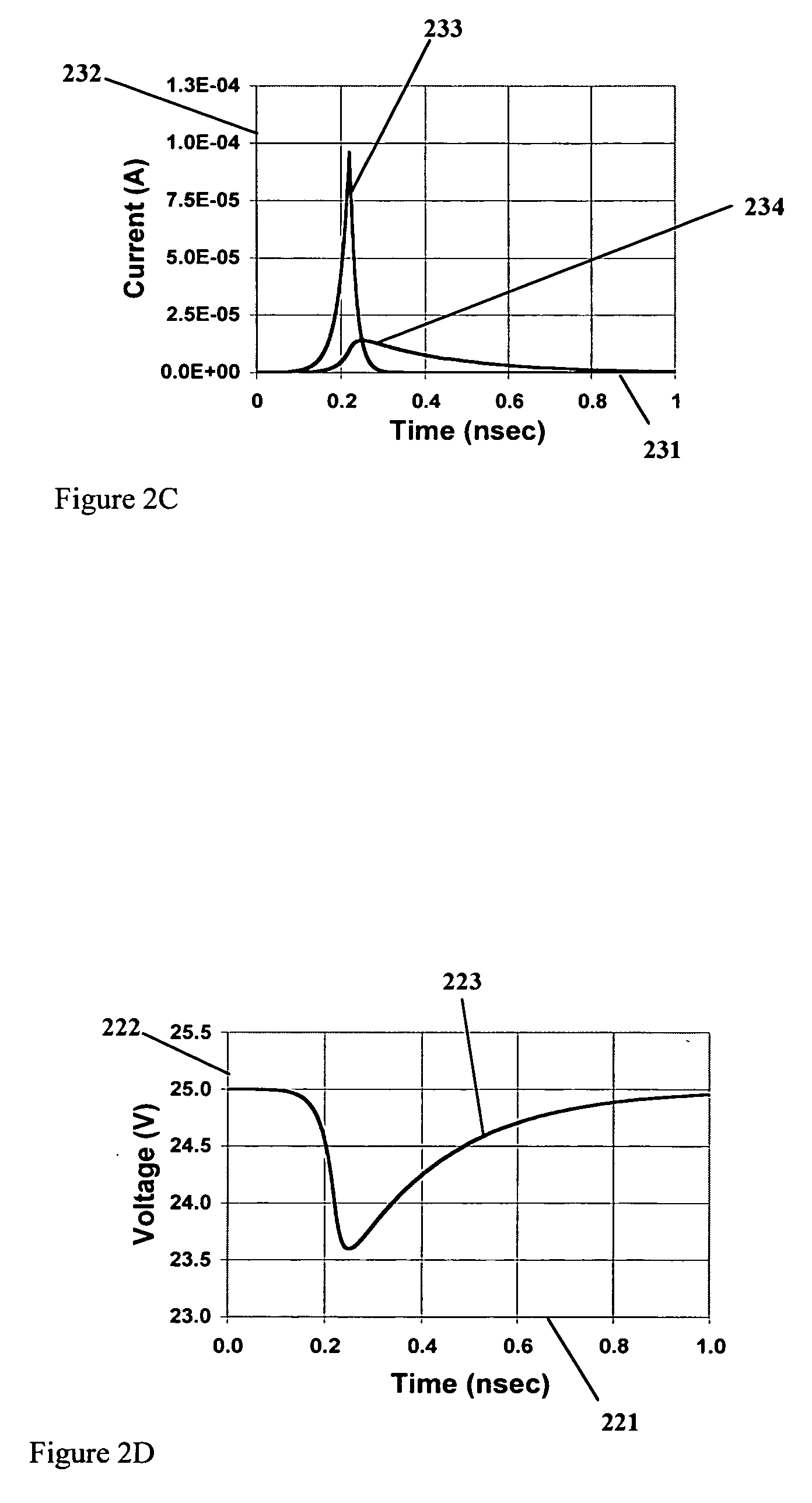Large-area detector
a detector and large-area technology, applied in the field of solid-state physics and electronics, can solve the problems of all the above limitations of spads, and the general bad idea of using low v to achieve low gain, so as to increase detectivity, reduce gain, and reduce the effect of sensitivity
- Summary
- Abstract
- Description
- Claims
- Application Information
AI Technical Summary
Benefits of technology
Problems solved by technology
Method used
Image
Examples
Embodiment Construction
[0057] Reference is now made to FIG. 1A, showing a prior art approach to achieving high-speed, high sensitivity detection of optical photons using a microchannel plate (MCP) electron multiplier. Since MCP operation requires a high vacuum, the interior of 123 must be evacuated. A window 122 allows incident photons 120 to enter into the vacuum environment of the MCP. When an incident photon 120 with sufficient photon energy strikes a photocathode 121, a photoelectron 105 is ejected into the vacuum. An electrical field is applied between the photocathode 121 and the top of the MCP electron multiplier 103 in order to accelerate each photoelectron 105 towards the MCP plate 107. If a photoelectron 105 gains sufficient energy from this electrical field, and is incident on one of the pores 101 of the plate 107, it may impact ionize at the sidewalls of the pores 101, resulting in a cascade of electrons in an efficient, low-noise multiplication process. An electrical field is created down the...
PUM
 Login to View More
Login to View More Abstract
Description
Claims
Application Information
 Login to View More
Login to View More - R&D
- Intellectual Property
- Life Sciences
- Materials
- Tech Scout
- Unparalleled Data Quality
- Higher Quality Content
- 60% Fewer Hallucinations
Browse by: Latest US Patents, China's latest patents, Technical Efficacy Thesaurus, Application Domain, Technology Topic, Popular Technical Reports.
© 2025 PatSnap. All rights reserved.Legal|Privacy policy|Modern Slavery Act Transparency Statement|Sitemap|About US| Contact US: help@patsnap.com



